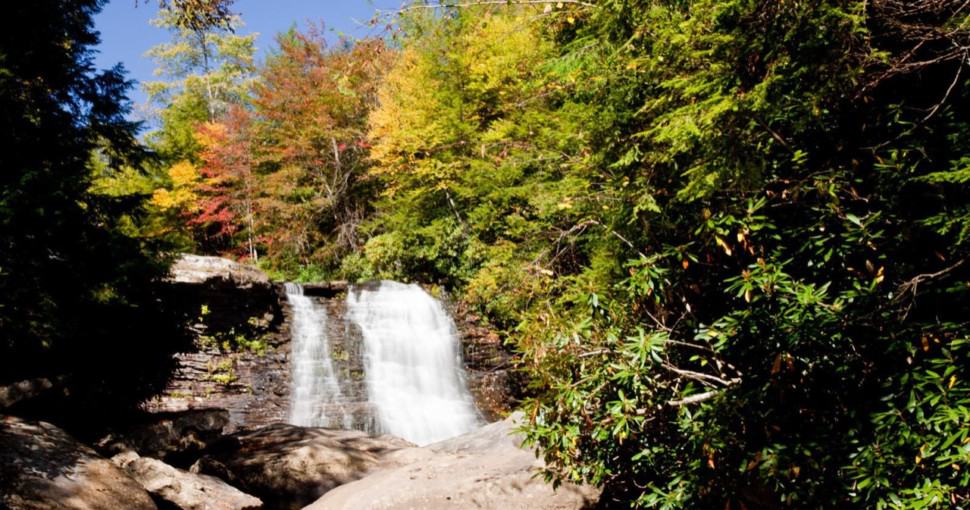Maryland is home to many different types of trees and many people, including myself, enjoy the beauty they bring. Whether it be a cherry tree in spring with its delicate petals or an oak in fall with its vibrant orange leaves, there is something for everyone when it comes to trees.
Contents
- 1. Eastern White Pine (pinus strobus)
- 2. White Oak (quercus alba)
- 3. Loblolly Pine (pinus taeda)
- 4. Eastern Hemlock (tsuga canadensis)
- 5. Red Maple (acer rubrum)
- 6. White Ash (fraxinus americana)
- 7. Sweet Gum ( liquidambar styraciflua )
- 8. American Sycamore (platanus occidentalis)
- 9. Tulip Tree (liriodendron tulipifera)
- 10. Pignut Hickory (carya glabra)
- 11. American Beech (agus grandifolia)
- 12. Sassafras (sassafras albidum)
- 13. Hazel Alder (alnus serrulata)
- 14. Atlantic White Cedar (chamaecyparis thyoides)
- 15. Black Cherry (prunus serotina)
- 16. American Chestnut (castanea dentata)
- 17. Chinquapin (castanea pumila)
- 18. Bald Cypress (taxodium distichum)
- 19. Flowering Dogwood (cornus florida)
- 20. White Fringetree (chionanthus virginicus)
- 21. Common Hackberry (celtis occidentalis)
- 22. Cockspur Hawthorn (crataegus crus-galli)
- 23. Eastern Hemlock (tsuga canadensis)
- 24. Honeylocust (gleditsia triacanthos)
- 25. Eastern Hophornbeam (ostrya virginiana)
- 26. Pawpaw (asimina triloba)
- 27. Common Persimmon (diospyros virginiana)
- 28. Serviceberry (amelanchier arborea)
- 29. Sumac (rhus)
In this post I will list some of my favorite trees that you can find in Maryland and give you some information on them so that you can make sure your yard has the best possible variety!
Don’t forget to read the post about the most common oak trees and the most common maple trees in the state of Maryland as well.
The Maryland state flower is the black-eyed Susan, and Marylanders like to say their state tree is the Baltimore oriole. But there are actually 29 trees that stand out as Maryland’s most common trees.
1. Eastern White Pine (pinus strobus)
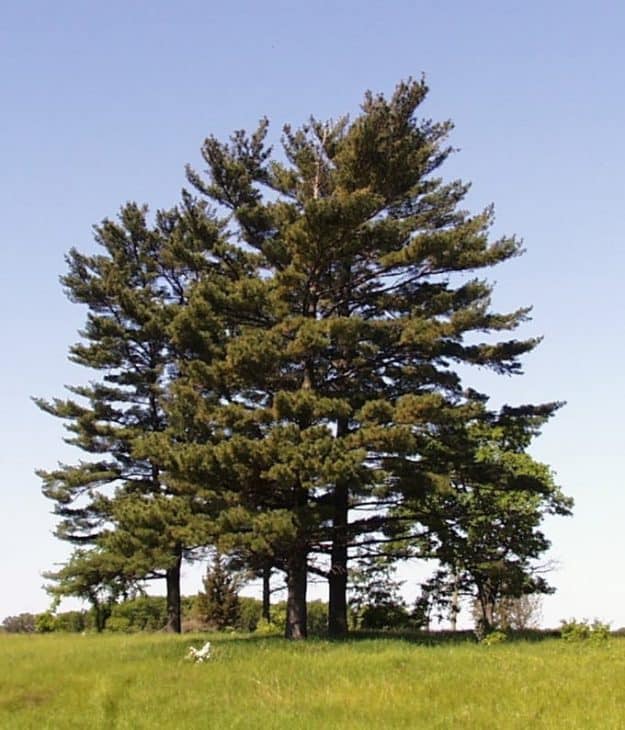
One of the most common trees in Maryland is the Eastern White Pine. The Eastern White Pine can grow up to 100 feet tall and have a spread of 40-50 feet, but it’s not just its height that makes this tree so popular. In addition to being one of Maryland’s most abundant species, the Eastern White pine also has many positive attributes including being drought tolerant, easy to grow from seedlings, and resistant to diseases such as white pine blister rust and gypsy moth caterpillars.
2. White Oak (quercus alba)
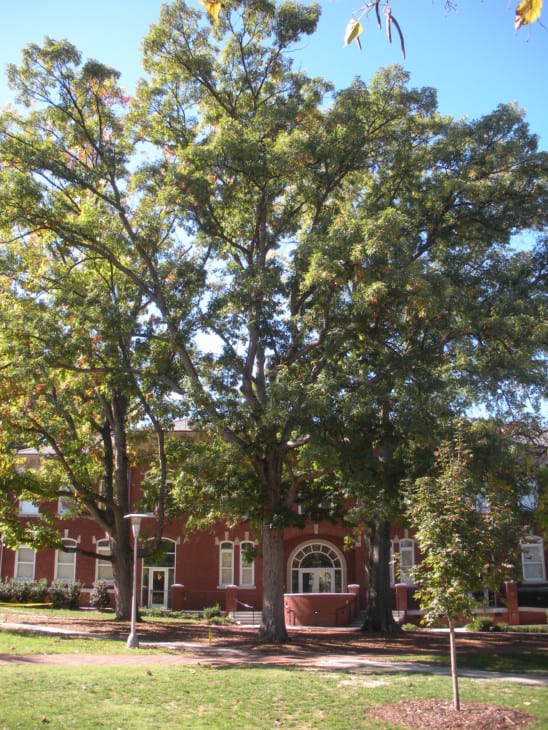
The White Oak is the official state tree of Maryland. It can be found in every county in Maryland and is one of Maryland’s most abundant trees. The leaves are simple, alternate, long-pointed at the tip, sometimes lobed or roundish at the base, with bristle-tipped teeth along the edges.
3. Loblolly Pine (pinus taeda)
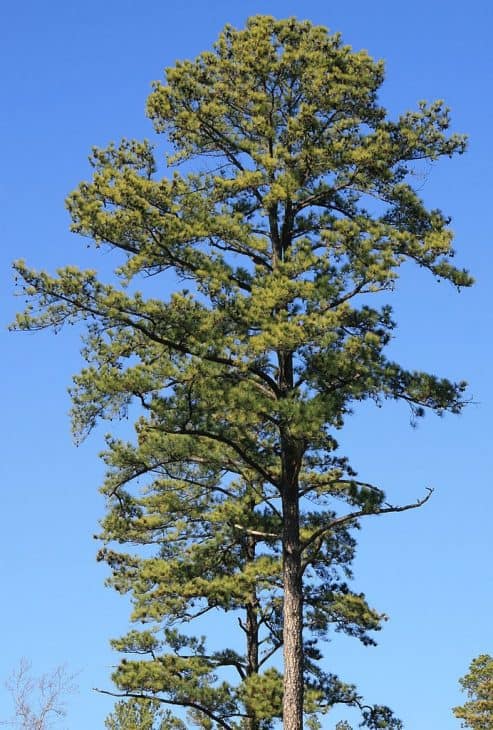
Pines are definitely one of the most common trees in Maryland, and the loblolly is no exception. They’re long-lived (possibly up to 500 years), fast growers, often straight and branch-less for 50 ft or more. The bark is reddish brown, thin, and scaly; on old trees it becomes thick, hard, and deeply furrowed. The cones are 4-7 inches long.
4. Eastern Hemlock (tsuga canadensis)
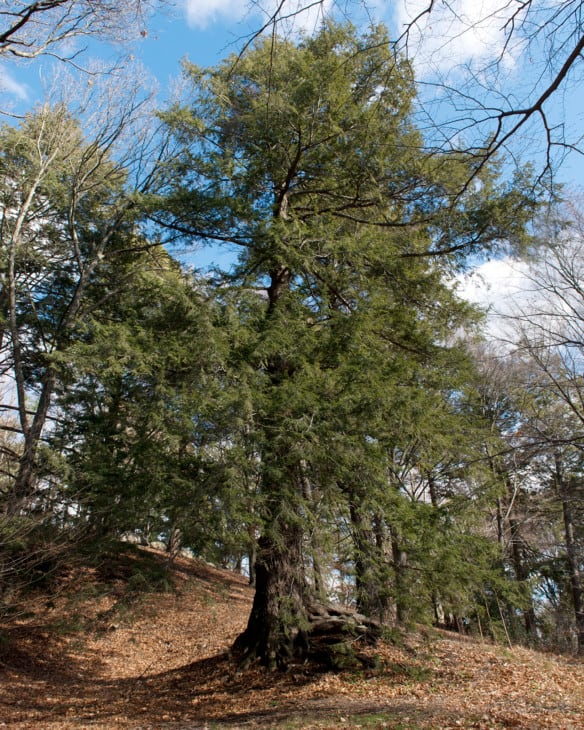
The Eastern Hemlock is another tree that can grow up to 100 feet tall, but it has a spread of only 30-40. Similar to the Eastern White Pine, this tree is also drought tolerant, easy to grow from seedlings, and resistant to diseases such as white pine blister rust and gypsy moth caterpillars.
5. Red Maple (acer rubrum)
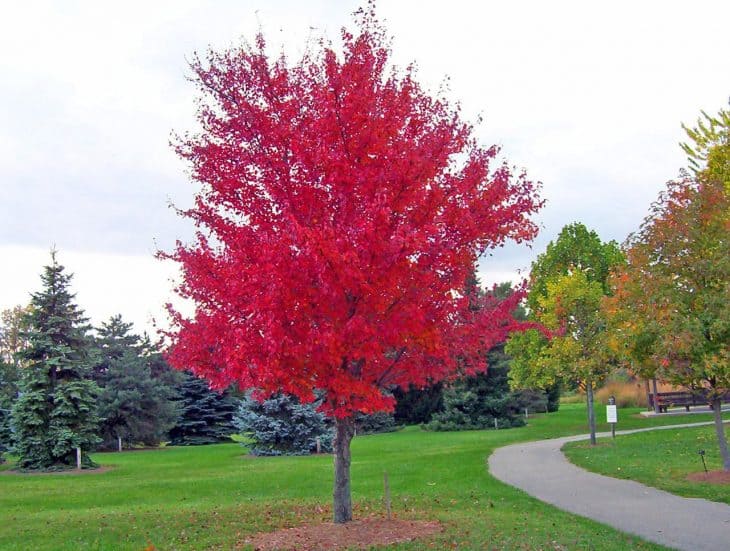
The red maple is the most widespread and abundant of all the native maples in North America. It can be found growing throughout Maryland, both in forests and near homes. The leaves are a brilliant scarlet color in fall with fine white mottling underneath, they turn a clear yellow or orange-red color in fall then drop from the trees in fall.
6. White Ash (fraxinus americana)
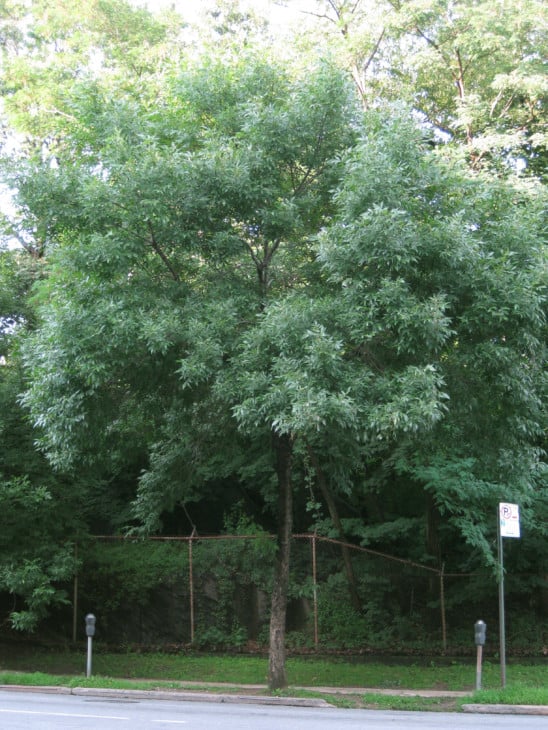
The white ash can be found almost everywhere in Maryland. It is easy to recognize by its long compound leaves with numerous leaflets. The tree gives off an unpleasant odor when injured or cut, but it has excellent wood for making furniture and athletic equipment like baseball bats. Its leaves are sometimes eaten by the larvae of mottled prominent moths, and the tree provides good habitat for northern blue salamanders.
7. Sweet Gum ( liquidambar styraciflua )
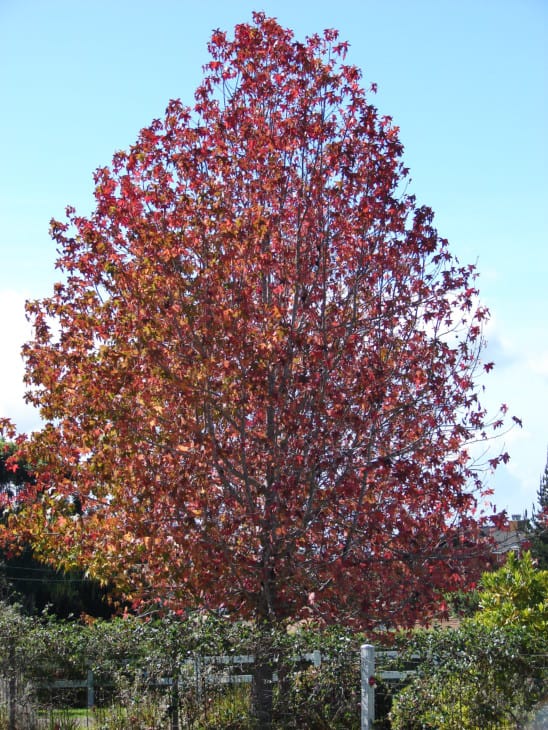
Sweet Gum is an extremely common tree in Maryland. It will grow almost anywhere, but prefers moist soils. The leaves are alternate and lobed or mitten-shaped with three or five pointed star-shaped lobes with sharp spines at the tip of each lobe.
8. American Sycamore (platanus occidentalis)
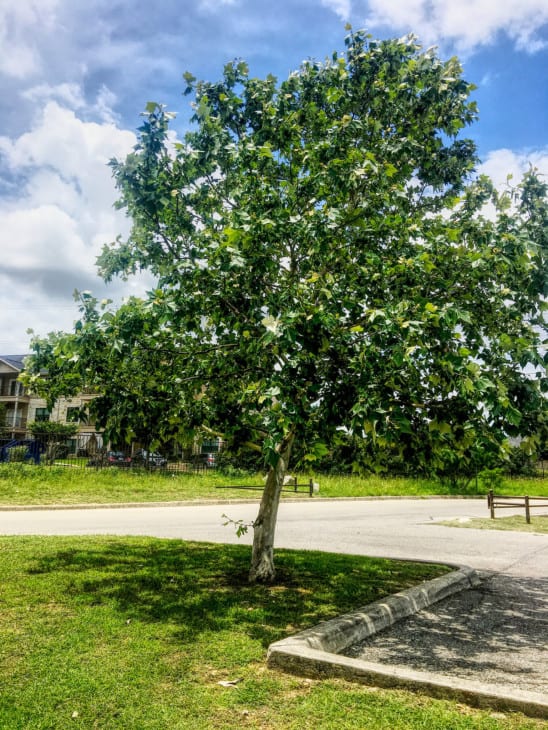
The American sycamore can be recognized by its mottled bark, which is quite light on young trees and darker and deeply furrowed in older specimens. The leaves are simple and alternate. They are large, 7-12 inches long, with 5 lobes that terminate in a bristle tip.
9. Tulip Tree (liriodendron tulipifera)
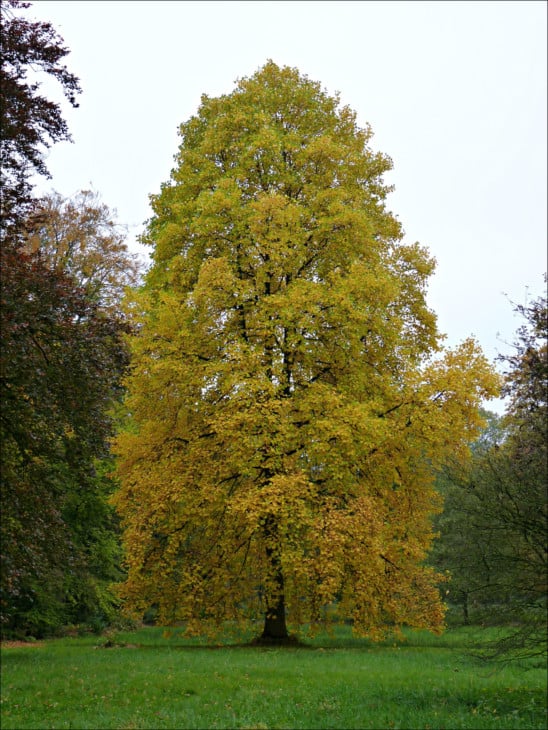
A member of the magnolia family, tulip trees are quite common in Maryland. Its most distinctive feature is the large tulip-shaped, yellowish-green flowers that appear on mature trees before the leaves open. A tree can produce up to 10,000 flowers per year.
10. Pignut Hickory (carya glabra)
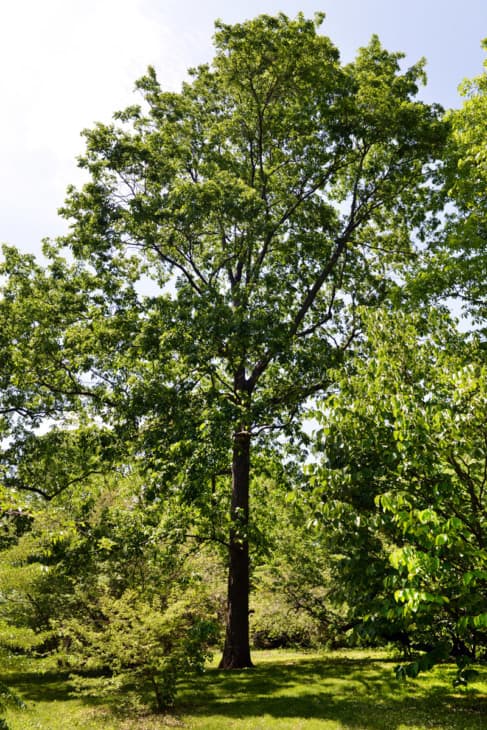
Pignut hickories are tall trees with fairly long, slender trunks. Its bark is separated into broad plates that curl at the edges and flake off in patches, exposing a mottled light-brown surface beneath. The nuts are smaller than other hickories but have thick shells which make them difficult to crack.
11. American Beech (agus grandifolia)
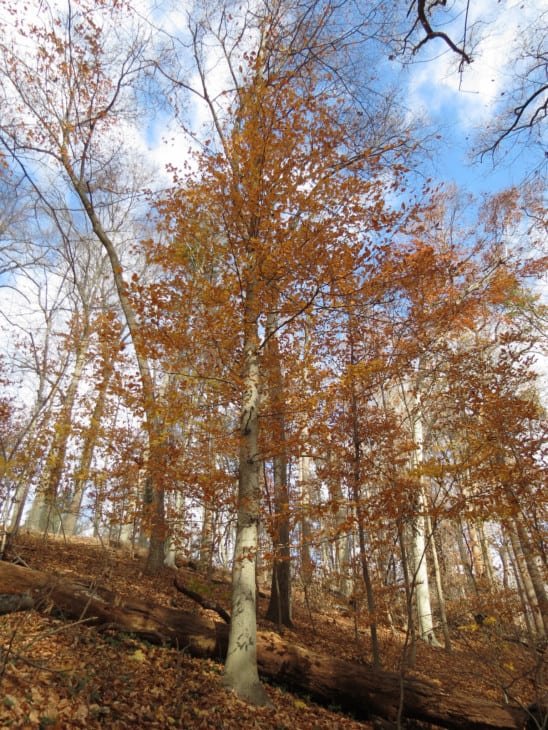
The American Beech is a large tree with mottled gray-brown bark and smooth leaves. It prefers moist soils, but it can grow on drier areas as well. Native Americans prized the nuts for food and used the wood to make dugout canoes.
12. Sassafras (sassafras albidum)
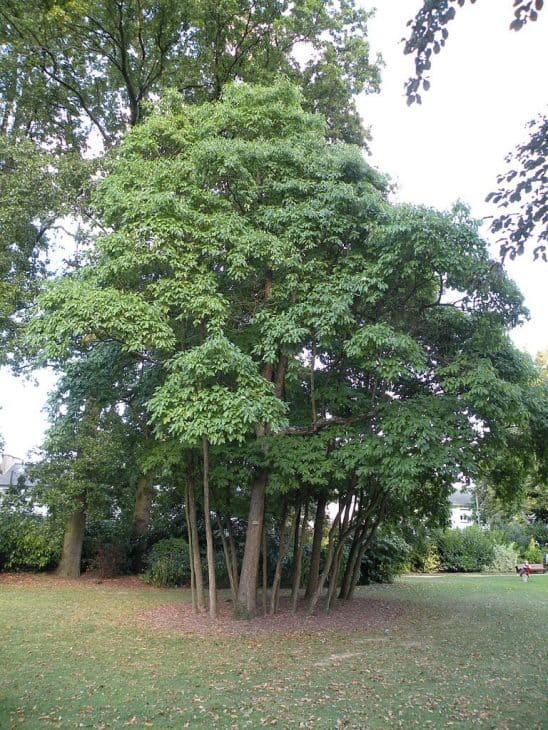
Sassafras is a common understory tree in maryland. Its most distinctive feature is its mitten-shaped leaves, which are aromatic when crushed. It has dark green, slightly mottled bark and solitary yellow flowers that appear in the early spring just before the leaves come out. The roots have been used to produce herbal teas and the wood has been used to make masts for ships, railroad ties, furniture and flavoring for root beer.
13. Hazel Alder (alnus serrulata)
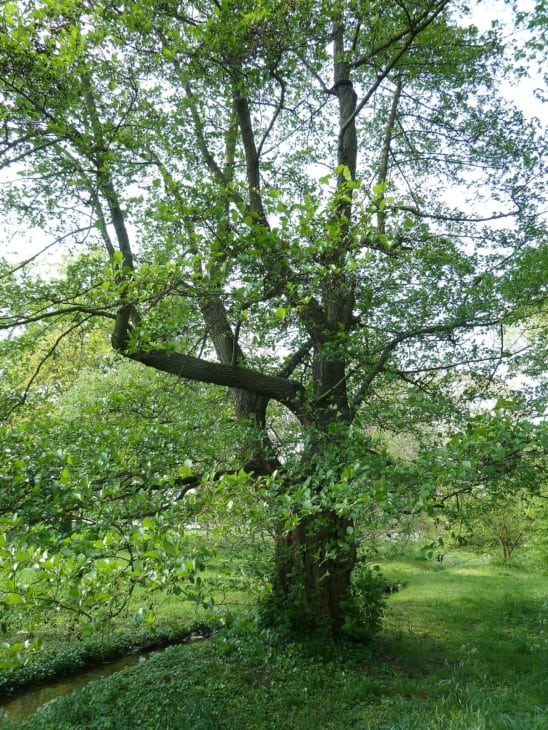
The Hazel Alder is a medium-sized tree with mottled, gray bark. Its leaves are alternate, simple, ovate or egg-shaped and serrated along the margin. The flowers are wind pollinated catkins that appear in the early spring before the leaves open.
14. Atlantic White Cedar (chamaecyparis thyoides)
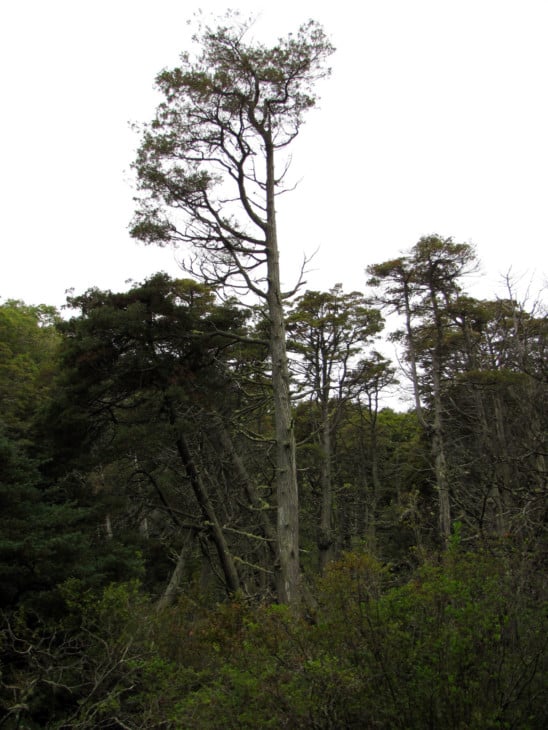
Found throughout Maryland, this tree is often used for landscaping purposes because it can grow in harsh conditions. Its clusters of tiny, fragrant flowers give the tree an unforgettable fragrance when they bloom in late spring or early summer. Its leaves are scale-like and appear to be overlapping each other on the branchlets.
15. Black Cherry (prunus serotina)
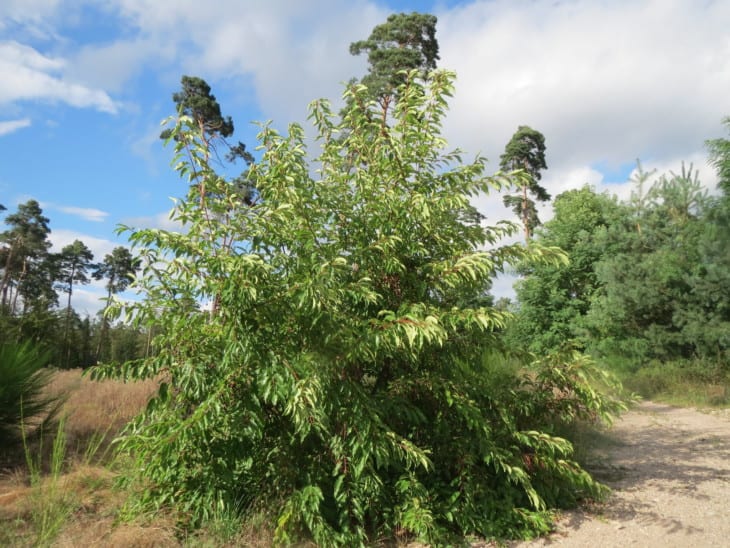
The black cherry is a Maryland native that can be found in many areas throughout the state, but is most common in the middle elevations. Its bark is gray to reddish brown with deep, longitudinal fissures on older trunks. The leaves are alternate and simple, 4-10 inches long, with finely serrated margins and a smooth texture. The flowers appear as inconspicuous reddish-green catkins and the fruit is a small, oval drupe with a thin, yellowish-red skin and fleshy pulp.
16. American Chestnut (castanea dentata)
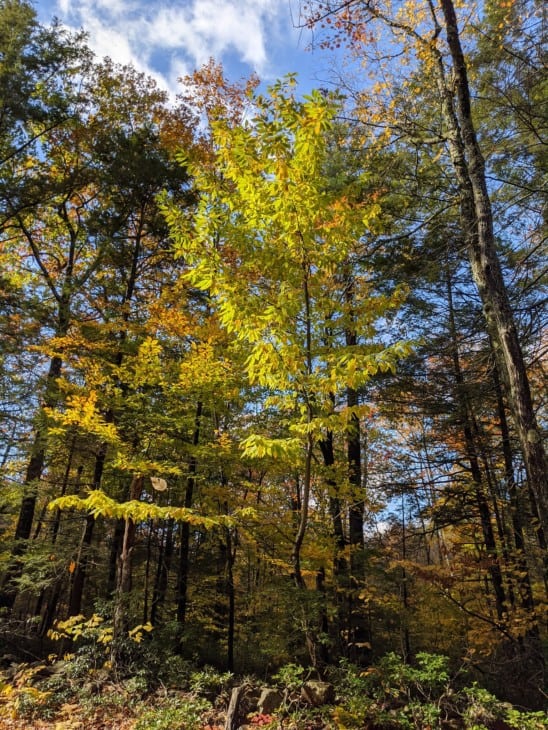
The American chestnut once grew in large forests throughout the eastern United States, but is now mainly found in isolated areas. This tree can grow up to 100 feet tall and has a straight trunk with gray bark that becomes deeply furrowed with age. The leaves are alternate and simple, 7-19 inches long, with a short point at the tip and a wedge-shaped base. The fruit is a prickly burr containing 1 to 3 chestnuts that ripen in the fall.
17. Chinquapin (castanea pumila)
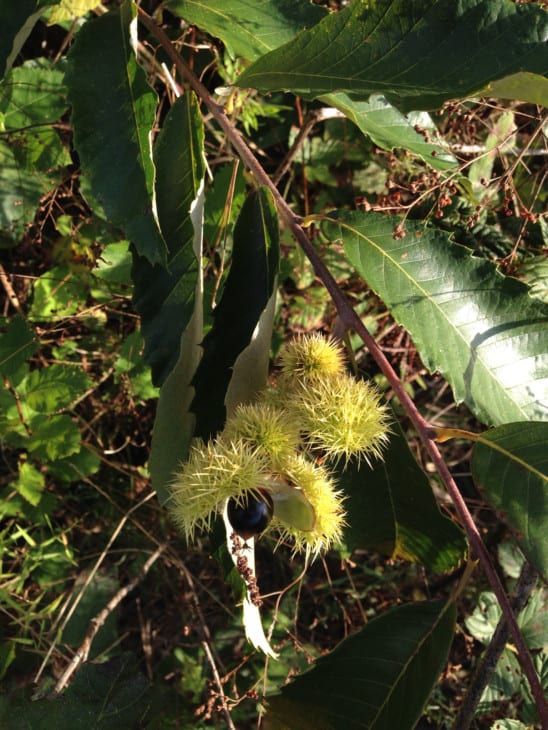
Chinquapins look similar to American chestnuts, but are smaller in size. They can be found growing in well-drained, dry, thin soils on ridges and hillsides. Its leaves are mitten-shaped with pointed tips, and the fruit is a round nut covered by thin flaps of thin, papery skin.
18. Bald Cypress (taxodium distichum)
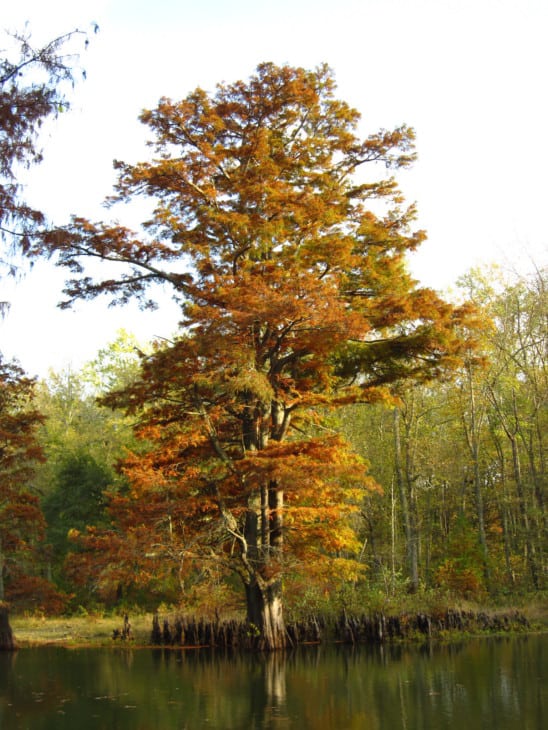
This tree has soft, heart-shaped leaves that are dark green above and silvery white below. When they first emerge in the spring, the new leaves are bright copper colored. Bald cypresses can grow to 100 feet tall, with branches that form a rounded crown. They typically grow in wet soils along stream banks or areas where there is water standing for a part of the year.
19. Flowering Dogwood (cornus florida)
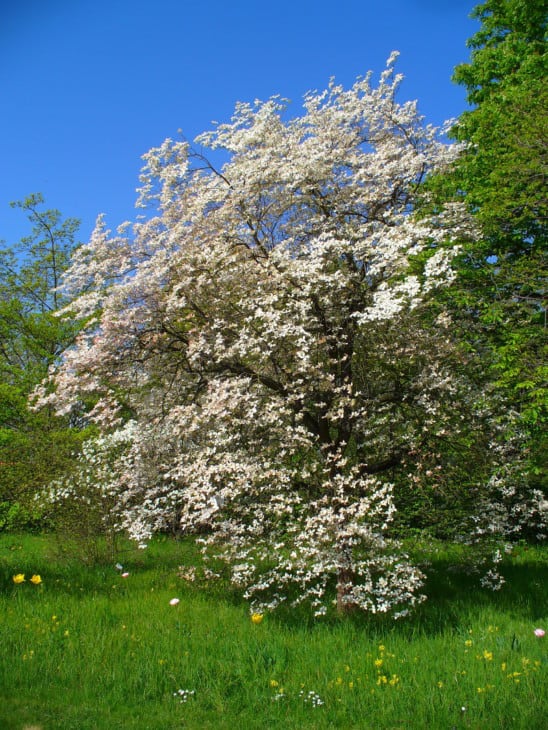
The flowering dogwood is a small, deciduous tree that reaches heights of 30-40 feet. The white flowers look like tiny bells and appear in early spring, before the leaves come out. Flowering dogwoods are prized for their colorful berries, which ripen to bright red and remain on the tree through winter.
20. White Fringetree (chionanthus virginicus)
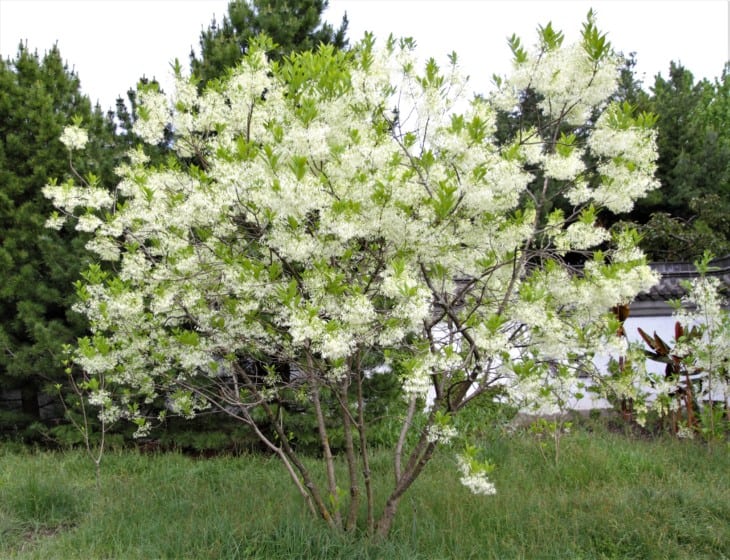
The white fringetree grows 50-60 feet tall and is a native understory tree in Maryland. Its fragrant, white flowers appear in drooping clusters in early spring before the leaves emerge. It has smooth gray bark and dark green, compound leaves with many pointed leaflets.
21. Common Hackberry (celtis occidentalis)
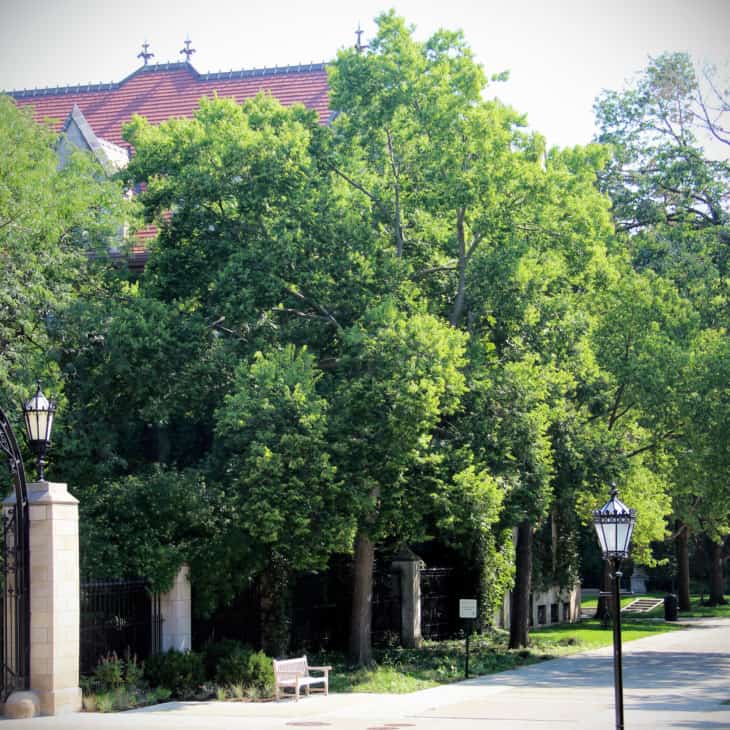
Hackberry trees are an important food source for many Maryland animals, including cattle. Its small leaves are broad with pointed tips and lobes along the margins. It is an easily identified tree by its red to reddish-purple fruit, which appear in September or October after the leaves have fallen.
22. Cockspur Hawthorn (crataegus crus-galli)
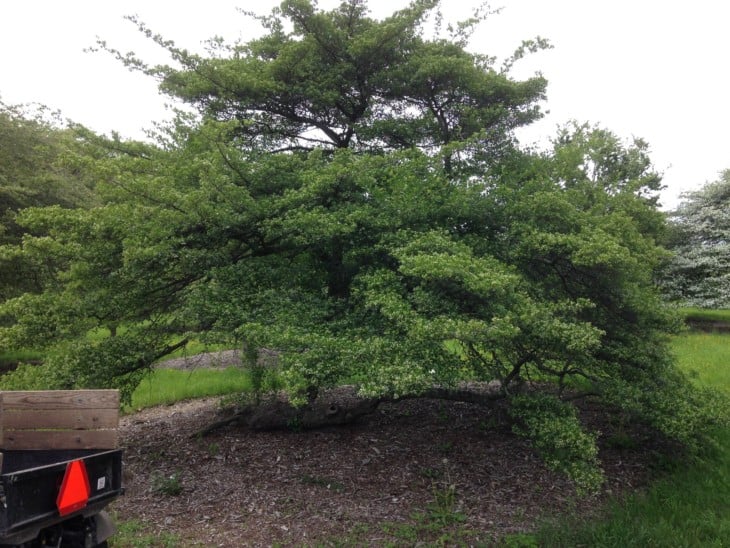
The Cockspur hawthorn is a small tree that grows in thickets and hedgerows throughout Maryland. It has sharp thorns, which are thought to be an adaptation to prevent livestock from eating the fruit. The leaves are small with 5-7 teeth along each margin and appear reddish when they first emerge.
23. Eastern Hemlock (tsuga canadensis)

The eastern hemlock is a Maryland native that can be found throughout the state in dry, rocky soil. It has a narrow crown and drooping branches with short needles that give it a delicate appearance. The bark is reddish-brown to gray-brown and shreds into small scales.
24. Honeylocust (gleditsia triacanthos)
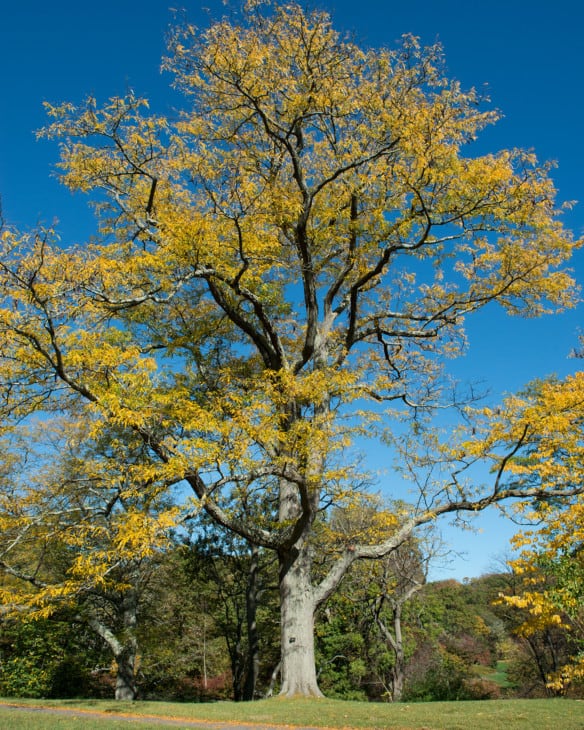
The honeylocust is a deciduous tree that grows 50-60 feet tall. It has compound leaves with 24 to 28 leaflets, and its bark exfoliates in thin strips. The leaf buds and twigs are covered in small, sharp thorns and the fruit is long and bean-like.
25. Eastern Hophornbeam (ostrya virginiana)
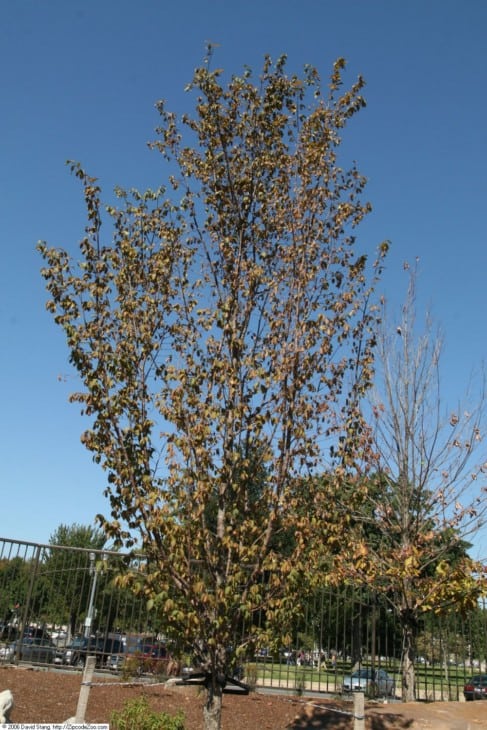
Eastern hophornbeams grow 60-80 feet tall and have a thick trunk and wide crown. The bark becomes ridged and furrowed with age, while the new twigs are coated in small hairs. In spring, dark green leaves unfurl from clusters of pointed scales on last year’s stems.
26. Pawpaw (asimina triloba)
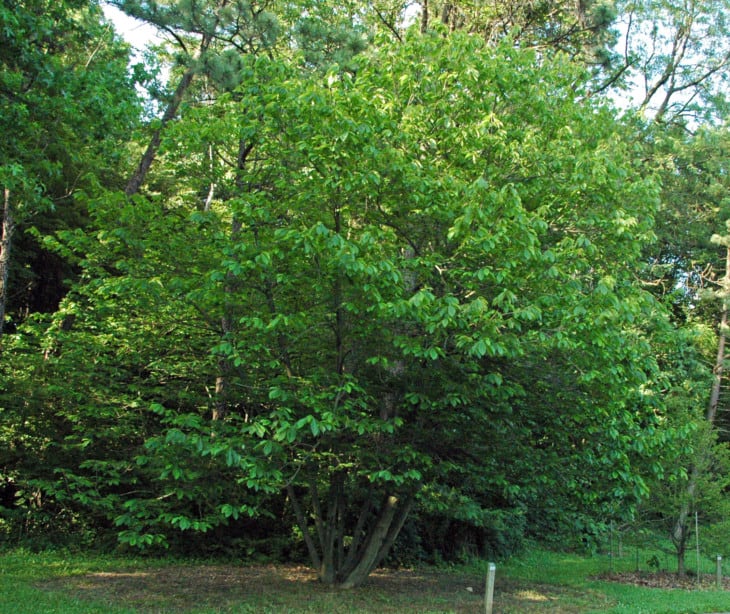
The pawpaw is a small, deciduous tree that produces large, edible fruit. The leaves are mitten-shaped with pointed tips and coarsely toothed margins. Pawpaws grow in thickets along stream banks or moist woods, but are becoming less common throughout the state.
27. Common Persimmon (diospyros virginiana)
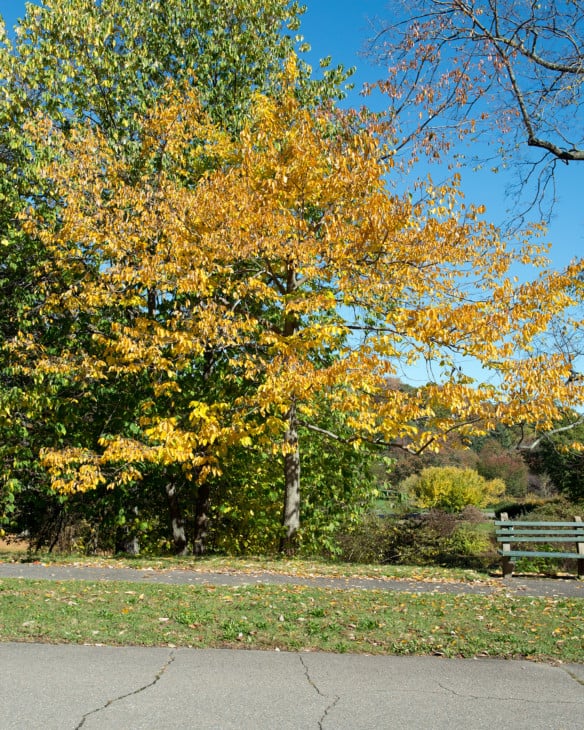
The persimmon is a small tree that can be identified by its reddish-brown, flaking bark. It has simple, oblong leaves with pointed tips and coarsely toothed margins. The fruit is orange-red when ripe, which splits open to reveal several flat, brown seeds surrounded by sweet pulp.
28. Serviceberry (amelanchier arborea)
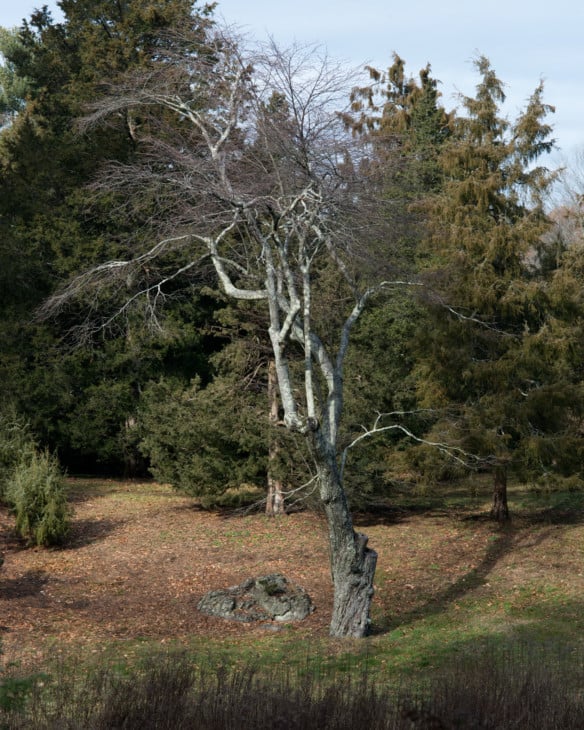
The serviceberry is a small deciduous tree that produces white, bell-shaped flowers in early spring. The bark has dark horizontal stripes and the leaves are alternate with 5 to 7 leaflets. Serviceberries have blue or black fruit that ripen in late summer and remain on the tree through winter.
29. Sumac (rhus)
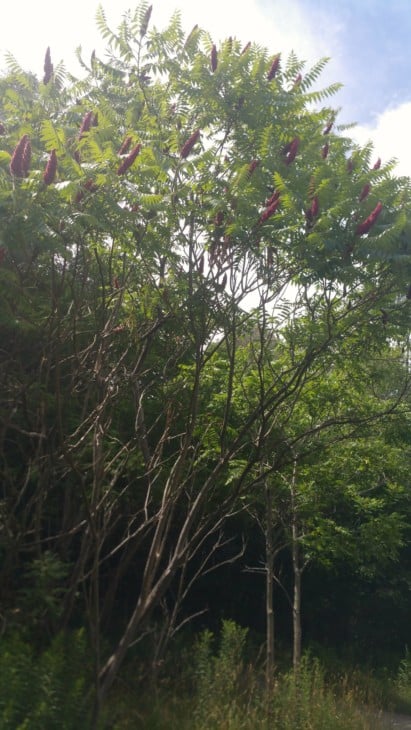
Sumacs have alternate compound leaves with 3-7 leaflets and white flowers that grow in large terminal clusters. The fruit is a dark red drupe that ripens in fall. Sumacs range from shrubs to small trees, but can be easily identified by their mitten-shaped flower clusters and smooth gray bark.

